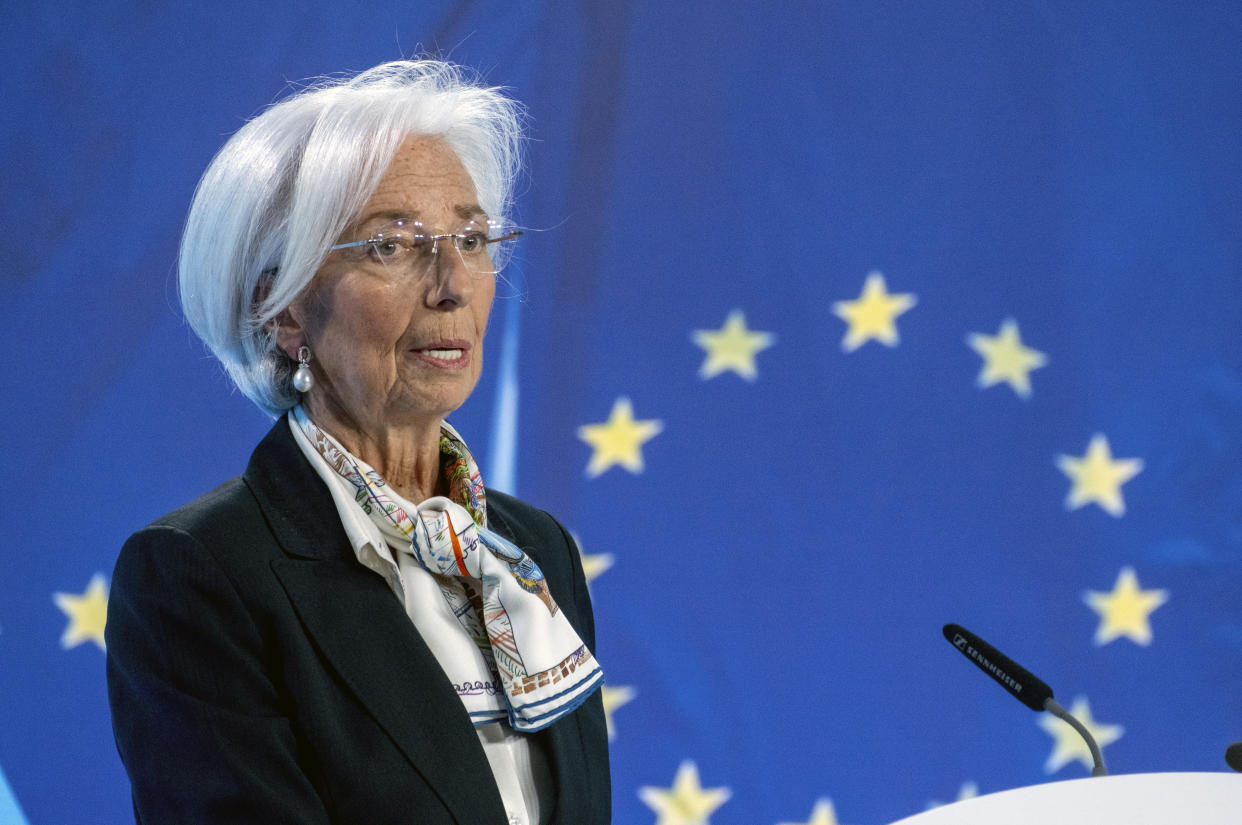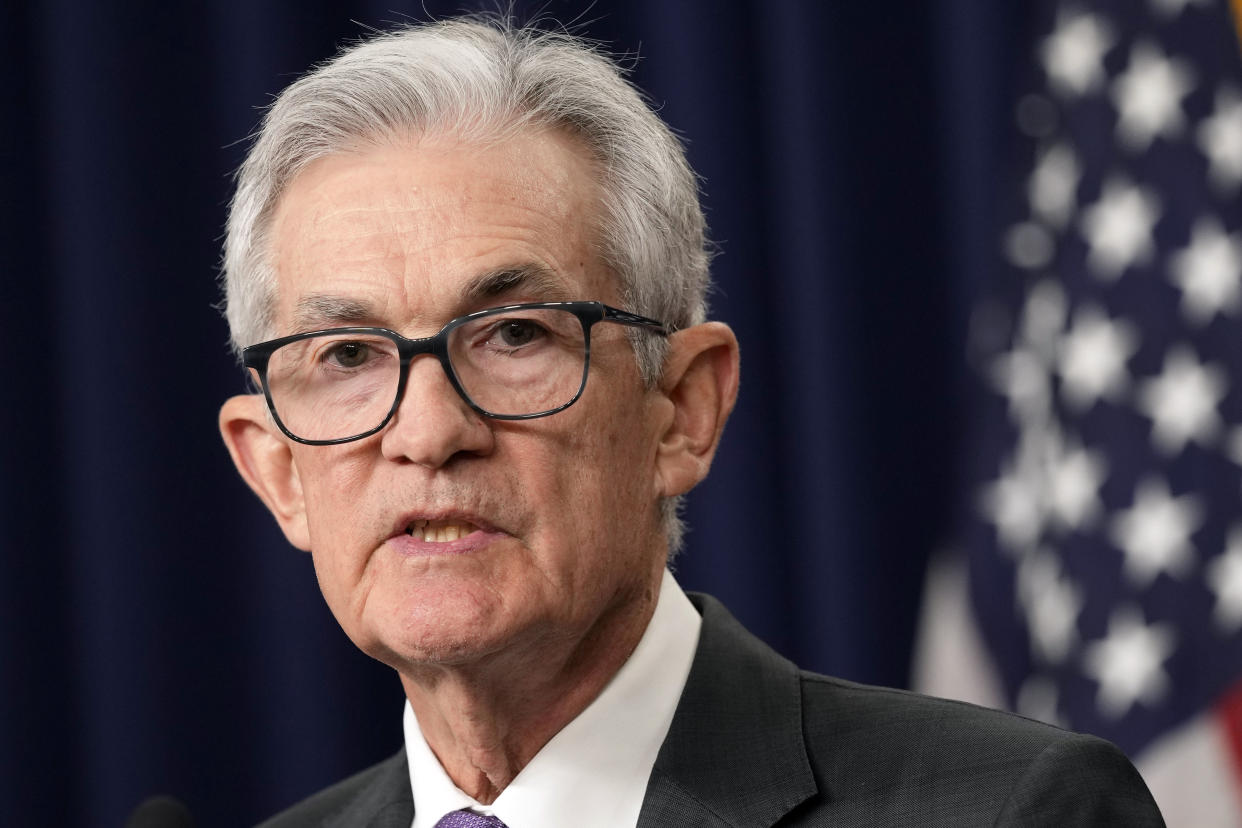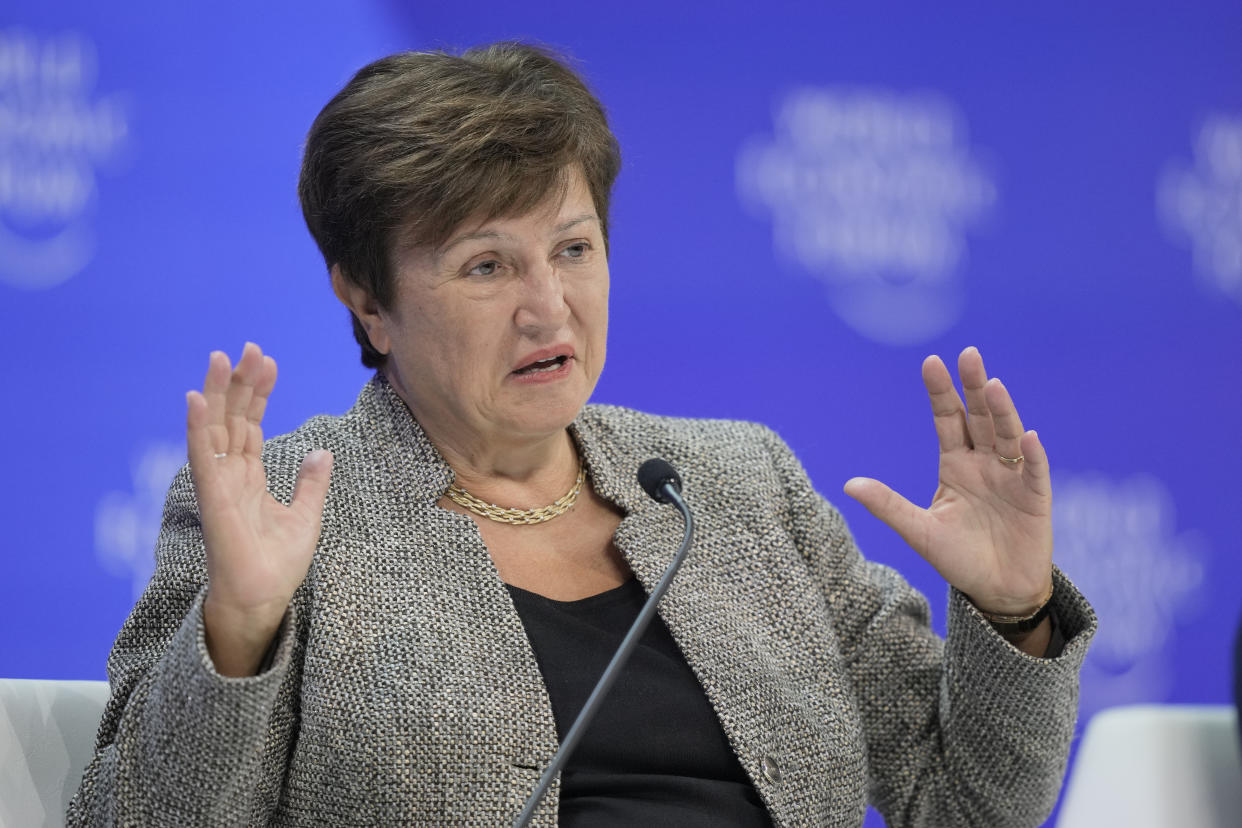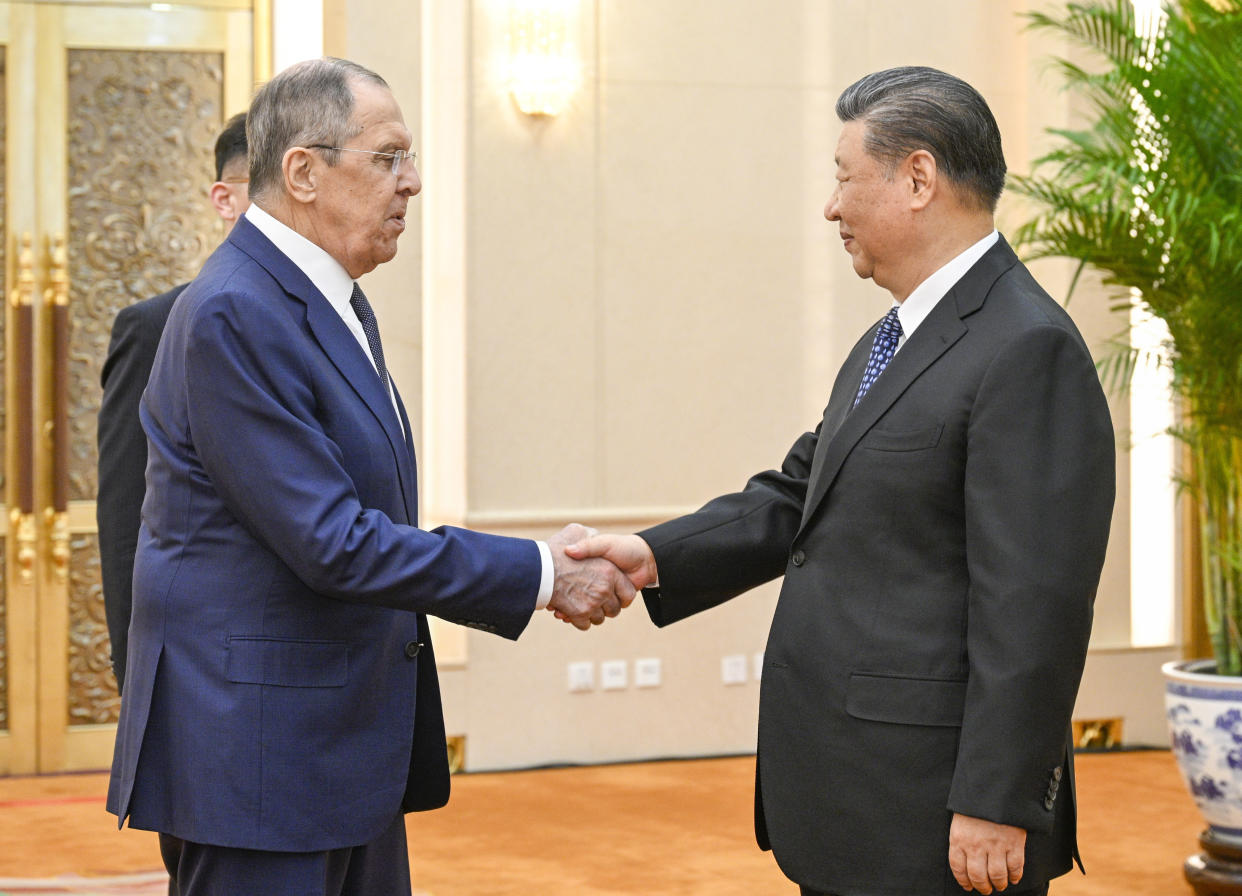IMF expects central banks to cut rates in second half of 2024 as inflation falls
Global central banks will begin cutting interest rates in the second half of the year as inflation declines, according to a new outlook from the International Monetary Fund.
Economic growth will also remain resilient, the IMF said in its new World Economic Outlook report released Tuesday. The IMF expects global growth to expand at 3.2% this year, a tenth of a percent higher than forecast in January.
It now sees only a 10% chance of a global recession — defined as growth dropping below 2%.
What will allow central banks to begin cutting is that inflation is projected to continue dropping through the year, with global headline inflation expected to decrease to 5.9% this year and 4.5% next year, compared with 6.8% last year.
The fall in global inflation is being driven by a drop in so-called core inflation — or prices of goods excluding volatile food and energy prices — helped along by elevated interest rates, weakening job markets, and relief from higher energy prices.
This forecast, however, was made prior to Iran’s attack on Israel. The IMF warned in the report that any escalation in conflict in the Middle East could change the trajectory.

The IMF’s rate cut outlook is not necessarily the same in different parts of the world. Divergence in inflation and growth between the US, Europe, and other developed countries could mean different timetables for central banks in those regions.
The European Central Bank is expected to initiate the first rate cut of the major global central banks in June.
But the US is still more of a wildcard as investors continue to push back their bets on when cuts could begin due to hotter-than-expected inflation data and a surprisingly resilient economy.
Read more: What the Fed rate decision means for bank accounts, CDs, loans, and credit cards

Among advanced economies, the US has experienced the strongest rebound, helped by rising productivity growth.
"Policymakers must resist calls for early interest rate cuts," IMF managing director Kristalina Georgieva said in a speech last week ahead of the IMF/World Bank Spring meetings in Washington.
"Premature easing could see new inflation surprises that may even necessitate a further bout of monetary tightening."
The IMF predicts that by the fourth quarter of this year, the Fed’s policy rate will decline from its current range of 5.25%-5.5% to 4.5%-4.75%, implying three rate cuts, in line with the median for Federal Reserve officials as of their March policy meeting.

That is more than what investors now expect; the current bet is for just two cuts this year.
Growth expectations
In the US, the IMF upgraded its growth outlook by 0.6% to 2.7% this year — more than the 2.1% the Fed sees — before slowing to 1.9% next year as gradual fiscal tightening and a softening in the job market slow demand.
In contrast, the euro area is recovering much more gradually, reflecting the lingering effects of high energy prices and weaker productivity growth.
Growth in the euro area is projected to recover from its low rate of an estimated 0.4% last year, which reflected relatively high exposure to the war in Ukraine, to 0.8% this year and 1.5% in 2025.
While global growth is expected to continue steadily expanding this year and next, it’s weak by historical standards. The outlook for the medium term is also the lowest in decades.
IMF analysis shows a significant and broad-based slowdown in productivity accounts for over half of the slowdown in advanced and emerging economies.
Another factor is an expected drop in growth in GDP per person to 2.1% — down from 3.1% pre-global financial crisis — that could weigh on standards of living.
The participation of people in the workforce is also expected to drop as populations age and business investment weakens.
Global trade has also fallen as new trade blocs emerge in the wake of Russia's invasion of Ukraine, leading to more fragmentation, along with weakening trade links between China and the US.

China’s economy is expected to slow this year to 4.6% from 5.2% last year and slow further to 4.1% next year.
The IMF says artificial intelligence could boost investment in some cases in the near term, and that over the medium term, it could raise worker productivity and incomes and boost growth. But AI could also cause job displacement and inequality.
Advanced economies stand to benefit from AI sooner than emerging markets and developing economies, according to the IMF, given greater emphasis on cognitive-intensive roles in the types of jobs.
In advanced economies, AI could affect about 60% of workers, with about half of the people exposed gaining higher productivity and higher incomes. The other half may see lower demand for their jobs and lower wages.
The IMF estimates AI could affect about 40% of jobs in emerging market economies, with less scope for a productivity boost.
Click here for in-depth analysis of the latest stock market news and events moving stock prices.
Read the latest financial and business news from Yahoo Finance
